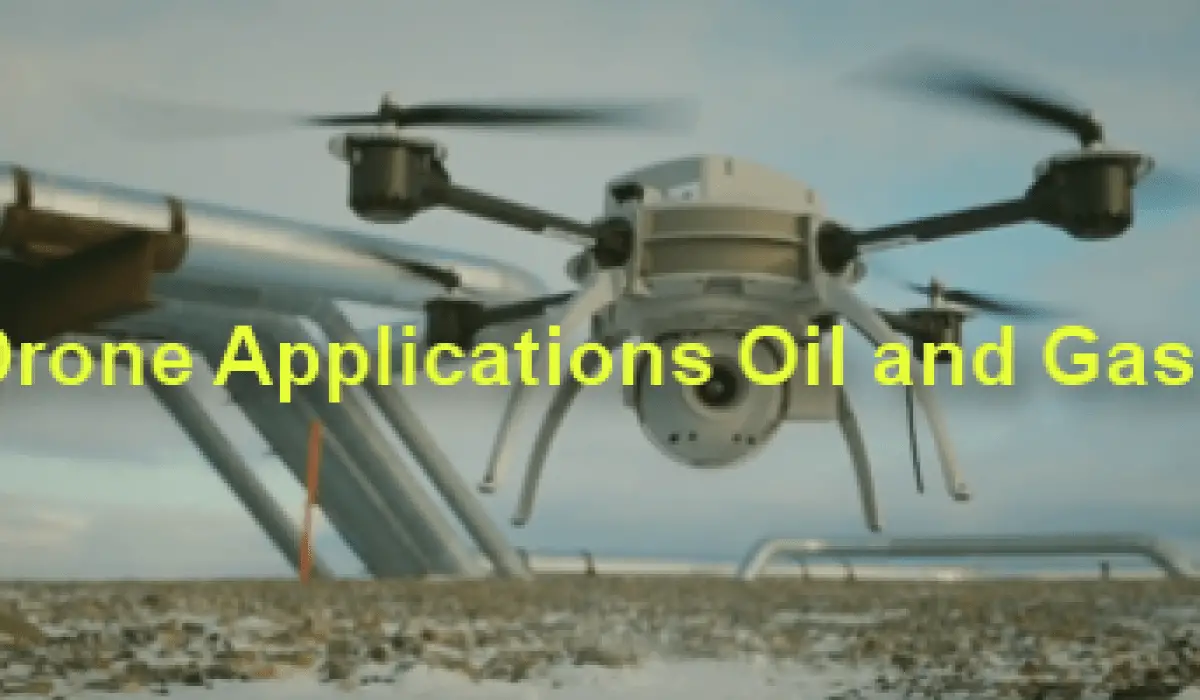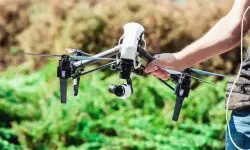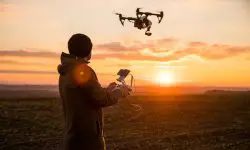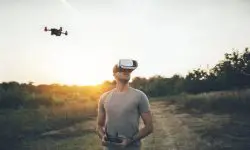As an Amazon Associate I earn from qualifying purchases.
Oil and Gas Market is now using drones as one of the most important equipment to improve the exploration and production of petroleum products that are still available today. Companies that are mainly producing petroleum products welcome the use of drones because it is a helpful device to improve commodity production. To further understand the role of drones in oil and gas exploration, these are devices that increase the output of oil products to sustain the need of global market. This is the reason why there are more oil companies that are opting to use drones to boost petroleum production.
Production of oil and gas are becoming competitive in the modern society because there are new petroleum producers that shares similar target markets across the world. This is why entrepreneurs use drone for oil and gas companies to boost exploration of remaining natural resources. Drones are capable to visualize any presence of petroleum reserve because it uses heat and sensor to confirm it’s location. Oil and Gas Companies are drastically searching for the most innovative exploring oil reserves before electronic automobiles will dominate transportation systems in near future.
A. Application on Pipelines:
 1. Pipeline Inspection: This is referred as the process of conducting a visual inspection across the hollow space of the whole pipeline system for any damage or unusual activities. The drone application in pipeline guides engineering maintenance staff to detect unusual activities that could risk safety procedures.
1. Pipeline Inspection: This is referred as the process of conducting a visual inspection across the hollow space of the whole pipeline system for any damage or unusual activities. The drone application in pipeline guides engineering maintenance staff to detect unusual activities that could risk safety procedures.
2. Repair of Pipeline: Drones are used by Oil and Gas companies to repair pipelines against external threats that associate either natural or man-made cause. Robotic drones are automatically designed to detect and repair any damage along the hollow tube inside the pipeline before petroleum products can pass through.
 3. Pipeline Protection: Drone applications in oil and gas intend to protect the pipeline from any threats. Roving drones are able to detect any external threats which are attempting to cause destruction to the facilities of the system. The camera and sensor system can detect natural cause such as the presence of calamity that can damage the pipelines.
3. Pipeline Protection: Drone applications in oil and gas intend to protect the pipeline from any threats. Roving drones are able to detect any external threats which are attempting to cause destruction to the facilities of the system. The camera and sensor system can detect natural cause such as the presence of calamity that can damage the pipelines.
 4. Pipeline Monitoring: Use of drones in oil and gas commonly intend to monitor the vicinity of the pipeline system within its perimeter. The application is to visually monitor the area to ensure that any threats will immediately inform the administrator and the safety committee of the oil and gas company. Operator installs the device in every 100 meters to ensure a full monitoring of the system.
4. Pipeline Monitoring: Use of drones in oil and gas commonly intend to monitor the vicinity of the pipeline system within its perimeter. The application is to visually monitor the area to ensure that any threats will immediately inform the administrator and the safety committee of the oil and gas company. Operator installs the device in every 100 meters to ensure a full monitoring of the system.
 5. Check for Seismic Activities: Pipelines are vulnerable to natural hazards such as earthquake. Geologists of oil and gas company use seismology drones to constantly monitor the pipelines vicinity and record any seismic activity. The purpose is to provide multiple signals to every natural-hazard that could destroy any pipeline parts. Any seismic activities caused by natural events will be recorded by the drone to prompt any precautionary measure.
5. Check for Seismic Activities: Pipelines are vulnerable to natural hazards such as earthquake. Geologists of oil and gas company use seismology drones to constantly monitor the pipelines vicinity and record any seismic activity. The purpose is to provide multiple signals to every natural-hazard that could destroy any pipeline parts. Any seismic activities caused by natural events will be recorded by the drone to prompt any precautionary measure.
B. Oil and Gas Exploration:
 6. Underground Exploration: Drones are deployed underneath the surface of the Earth. The purpose or the application is to explore the presence of the petroleum products . A hollow metal tube will be inserted deep into the ground with the drone to visualize any presence of oil resources that are available for the extraction by the company.
6. Underground Exploration: Drones are deployed underneath the surface of the Earth. The purpose or the application is to explore the presence of the petroleum products . A hollow metal tube will be inserted deep into the ground with the drone to visualize any presence of oil resources that are available for the extraction by the company.

7. Undersea Exploration: Deploying drones for offshore oil and gas exploration provides another potential for oil and gas under the surface of the seas, oceans, lakes, and rivers around the world. The main application is to search and confirm any presence of untapped petroleum resources in the area that provides an alternative source to extract, process, and distribute oil and gas.
 8. Aerial Exploration: Common flying drones provide vital information of the targeted area. Oil and gas companies can use topographical information to explore the untapped petroleum products. Topographical information is used to view and analyze the perfect spot to install facilities. Drones record images to allow engineers to determine the right area to start building temporary passageway for logistics and manufacturing facilities.
8. Aerial Exploration: Common flying drones provide vital information of the targeted area. Oil and gas companies can use topographical information to explore the untapped petroleum products. Topographical information is used to view and analyze the perfect spot to install facilities. Drones record images to allow engineers to determine the right area to start building temporary passageway for logistics and manufacturing facilities.
 9. Water Sampling: Oil and gas companies use drones to collect water samples from water body that might contain essential elements and minerals to confirm the presence of petroleum products. It collects water sample from each location that are 100 meters apart to determine if there are changes with the composition of the specimen. Chemists are responsible for analyzing the contents of each specimen that are essential to confirm the any petroleum presence.
9. Water Sampling: Oil and gas companies use drones to collect water samples from water body that might contain essential elements and minerals to confirm the presence of petroleum products. It collects water sample from each location that are 100 meters apart to determine if there are changes with the composition of the specimen. Chemists are responsible for analyzing the contents of each specimen that are essential to confirm the any petroleum presence.
 10. Provide Visual Updates: Oil and gas companies deploy immobile drones to the extraction site because it provide relevant updates that are visualized by the camera for at least 24 hours a day. The personnel are able to monitor any chances with the operations as well as the presence of hazard that impacts the credibility of the company in general.
10. Provide Visual Updates: Oil and gas companies deploy immobile drones to the extraction site because it provide relevant updates that are visualized by the camera for at least 24 hours a day. The personnel are able to monitor any chances with the operations as well as the presence of hazard that impacts the credibility of the company in general.
C. Sensory Drones:
 11. Heat Sensor Drones: Oil and gas companies need drones that are highly capable of identifying facility area that are at risk for overheating. The application of heat sensor in drones is to measure the actual temperature of the machines and petroleum products before processing them into a purified commodity to target markets. If there are facilities which are at risk for overheating, the engineering staff can immediately repair facilities to prevent accidents or hazards.
11. Heat Sensor Drones: Oil and gas companies need drones that are highly capable of identifying facility area that are at risk for overheating. The application of heat sensor in drones is to measure the actual temperature of the machines and petroleum products before processing them into a purified commodity to target markets. If there are facilities which are at risk for overheating, the engineering staff can immediately repair facilities to prevent accidents or hazards.
 12. Sound Frequency Detection Systems: Drones with a sensitive sound frequency is ideal for oil and gas company to detect any unusual activities deep beneath a solid surface. The application is intended to analyze the composition of the selected underground layers of the Earth’s crust. The drone can either use infrared system or high-frequency waves to explore the layers under the soil surface, below the subterranean surface, and below the seabed. This helps to detect any presence of a raw petroleum product.
12. Sound Frequency Detection Systems: Drones with a sensitive sound frequency is ideal for oil and gas company to detect any unusual activities deep beneath a solid surface. The application is intended to analyze the composition of the selected underground layers of the Earth’s crust. The drone can either use infrared system or high-frequency waves to explore the layers under the soil surface, below the subterranean surface, and below the seabed. This helps to detect any presence of a raw petroleum product.
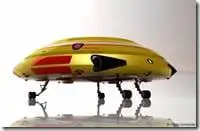 13. Infra-Red Drone: The main aim of drone with infra-red feature is to visualize any distant area from the focused area. This is done by using an infra-red technology which can penetrate the walls or any solid structure. The application is to detect any unusual activities that are happening beyond any surface that conceals a hollow area that is not viewable by the naked eye or a normal camera lens due to the presence of an obstacle.
13. Infra-Red Drone: The main aim of drone with infra-red feature is to visualize any distant area from the focused area. This is done by using an infra-red technology which can penetrate the walls or any solid structure. The application is to detect any unusual activities that are happening beyond any surface that conceals a hollow area that is not viewable by the naked eye or a normal camera lens due to the presence of an obstacle.
 14. Night-Vision Drones: Oil and gas companies need a night-vision drones because these are organization that operates round-the-clock. The application of night-vision drones is to visualize the main functional area of the company in dark place or during the night-time. The purpose is to provide security measures to the company as well as protecting the facilities through a 24-hour monitoring cameras to prevent accidents and criminal elements.
14. Night-Vision Drones: Oil and gas companies need a night-vision drones because these are organization that operates round-the-clock. The application of night-vision drones is to visualize the main functional area of the company in dark place or during the night-time. The purpose is to provide security measures to the company as well as protecting the facilities through a 24-hour monitoring cameras to prevent accidents and criminal elements.
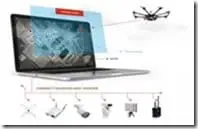 15. Movement Detector Drones: Movement detector drones in oil and gas companies are devices that are sensitive to any movement. The application of this drone is to spot any moving object by the device lens and then registers the object to the database file. This allow any personnel to review images or videos that can threaten the safety or positive achievements of the operations.
15. Movement Detector Drones: Movement detector drones in oil and gas companies are devices that are sensitive to any movement. The application of this drone is to spot any moving object by the device lens and then registers the object to the database file. This allow any personnel to review images or videos that can threaten the safety or positive achievements of the operations.
D. Oil and Gas Operations:
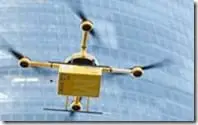 16. Logistics: Drone applications in oil and gas companies help the logistics department to transport purified products before it will be transported to target markets. Logistic drones are designed to carry products after the purification process have finished. These are small drones that facilitate product segregation that are transferred to their respective compartments.
16. Logistics: Drone applications in oil and gas companies help the logistics department to transport purified products before it will be transported to target markets. Logistic drones are designed to carry products after the purification process have finished. These are small drones that facilitate product segregation that are transferred to their respective compartments.
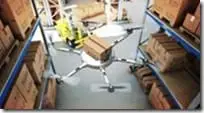 17. Manufacturing: After extraction of natural resources such as petroleum products, oil and gas companies install drones to speed up the purification and manufacturing of commodities. Drones increase the processing capacity of its machinery to lessen the time for the purification, filtering, and processing of the products. Drones can visualize, process, and inspect all products before distributing it to target markets.
17. Manufacturing: After extraction of natural resources such as petroleum products, oil and gas companies install drones to speed up the purification and manufacturing of commodities. Drones increase the processing capacity of its machinery to lessen the time for the purification, filtering, and processing of the products. Drones can visualize, process, and inspect all products before distributing it to target markets.
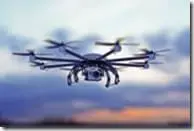 18. Physical Recording: Drones are always reliable for visually monitoring the facilities that relies with a 24-hour protection. A company heavily rely on the round-the-clock recording of all activity that are visually monitored by the drones. The security personnel as well as the maintenance staff are obliged to document all detected activities by their drones for legal and ethical procedures in the future.
18. Physical Recording: Drones are always reliable for visually monitoring the facilities that relies with a 24-hour protection. A company heavily rely on the round-the-clock recording of all activity that are visually monitored by the drones. The security personnel as well as the maintenance staff are obliged to document all detected activities by their drones for legal and ethical procedures in the future.
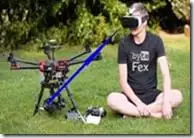 19. Occupational Health and Safety: Every employee of oil and gas company exposes themselves to a hazardous environment while extracting and exploring petroleum products. The application of drones provides a first line of defense to protect the health and safety of all working personnel. Engineers, maintenance personnel, and technical employees inhale toxic fumes and regularly making in contact with hazardous materials into their skin.
19. Occupational Health and Safety: Every employee of oil and gas company exposes themselves to a hazardous environment while extracting and exploring petroleum products. The application of drones provides a first line of defense to protect the health and safety of all working personnel. Engineers, maintenance personnel, and technical employees inhale toxic fumes and regularly making in contact with hazardous materials into their skin.
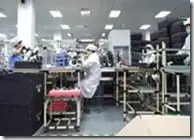 20. Laboratory Experimentation: For every oil and gas company, laboratory experimentation are always important for their operation and production of new products. The application of drones during laboratory experimentation is to assist chemical scientists to examine the composition of the oil and gas products. This is especially if the commodity is new, which needs a scientific analysis to identify components that are either missing or excessive.
20. Laboratory Experimentation: For every oil and gas company, laboratory experimentation are always important for their operation and production of new products. The application of drones during laboratory experimentation is to assist chemical scientists to examine the composition of the oil and gas products. This is especially if the commodity is new, which needs a scientific analysis to identify components that are either missing or excessive.
Amazon and the Amazon logo are trademarks of Amazon.com, Inc, or its affiliates.

